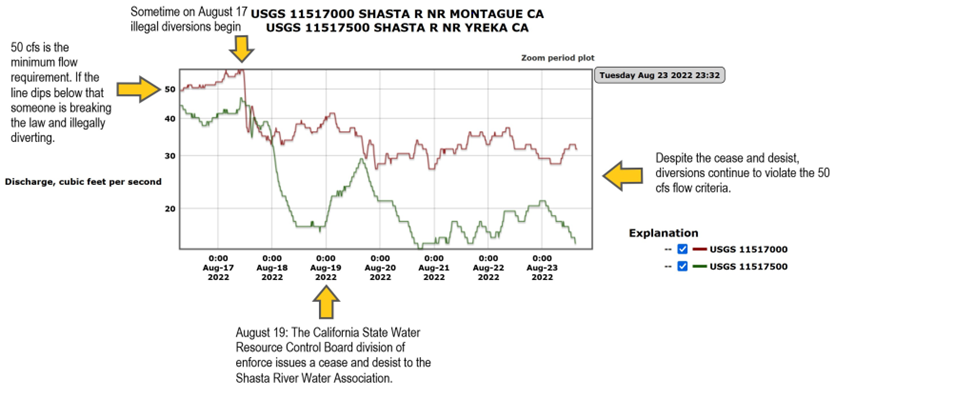You may not know that the California almond industry has been unable to ship its almonds for two years (almonds used to be shipped to China in returning empties; the past two years ships aren’t willing to wait at port long enough to fill up with almonds). Last year, 20% of CA almonds were held in storage for lack of shipping. This year, the prediction is that 30% of CA almonds will be held over. Let’s do some fun math and then do some fun context. For this exercise, we will be b.o.t.e. people, content with a first approximation. It will not be so inaccurate as to change the conclusion, which is likely to involve swearing.
Almond bearing acreage is 1,370,000 acres.
2021: 20% of 1,370,000 acres is 274,000 acres.
2022: 30% of 1,370,000 acres is 411,000 acres.
I would normally say that any crop needs 3.5af/a-year to grow and prevent soil salinity buildup, but lets say that almonds are all on drip and super-efficient. I’ll grant them 3af/a-year. Oooh! This is exciting.
2021: 274,000 acres * 3af/a-year is 822,000 acre-feet last year.
2022: 411,000 acres * 3af/a-year is 1,233,000 acre-feet this year.
As a side note, if the almond industry were at full exports, that would be 68% of its crop.
1,370,000acres *.68 * 3af/a-year = 2,794,800af-year. To be clear, growing almonds means (3af/a-year*1,370,000) the full 4,110,000 af (more than Oroville Reservoir (3.5MAF), almost a Shasta Reservoir (4.5 MAF)) are not available to Californians to do other things. But of that 4.1MAF, 2.8MAF are shipped away from California in the form of almonds. That’s more than Trinity Reservoir (2.5MAF). If we ended almond exports, we would return one Trinity Reservoir to the people of California. But let’s return to the almonds that can’t even be sold in 2021 and 2022, these Years of Our Drought. Time for the fun context!
2021: 0.82MAF converted to stored almonds.
2022: 1.2MAF converted to stored almonds.
MWD delivers 1.57MAF/average year. (4,300af/day*365days) MWD could have nearly twice as much water this year instead of having stored almonds. That’s two watering days/week. With some deep mulch, my father might have been able to have a vegetable garden for his fifty-first year of gardening.
We could have a filled Folsom Lake (1.1MAF) and done some salinity and temperature control in the Delta. But instead we have stored almonds.
We could do 1.5 of the mythical “800,000AF for the environment” that reappears every five years. But instead we have stored almonds.
In these two drought years, we would have had at least 2MAF more if almonds were not a permanent crop, and could be flexed to fit the market conditions. I’ll do another post for the conclusions, but maybe you guys could do some contexting of your own in the comments! Please observe the format.



